Starting a new unit in Spanish Class can be intimidating.
When I start a new unit with my Spanish classes, I like to remind myself to think about *why* I plan the activities that I do. Are my activities just busy work? No. Do I want my students to remember their memorized vocabulary solely for their quiz? Also no. Does our textbook vocabulary list cover all of the essential words we should learn? Definitely not. What I want to do is simple, and easy to achieve if I stop to plan it out.
During any given unit, I hope to:
- Keep my students engaged, interested, and motivated
- Support long-term language acquisition
- Offer opportunity for student input
- Focus on language proficiency (not memorization)
- Build my students’ confidence
- Maintain strong student-teacher relationships
- Uphold high expectations
- Motivate high quality work
- Provide support and differentiation
- Provide multiple opportunities to demonstrate proficiency
- Include time for review when needed
A quick note:
You may wonder why I have student-teacher relationships on there. I can say, without a doubt, that the strongest aspect I bring to my teaching game is my ability to establish connections and build relationships.
My students come to class because I care about them. They know I care about them because I tell them that I do, and because I show them that I do. Some have told me they come to school because I care about them. “Profe, I was gonna skip today but I knew you’d be mad at me.” or “I wasn’t gonna come but I know we are working on that project.” If our students are in class, and they want to stay awake (or keep their eyes off their phones) for us, we can teach them. If they aren’t, our jobs become much more difficult. I’m not saying it’s the end-all solution but I am saying that my job got easier when I started focusing on my students as individuals instead of “just another kid” in my classes of 30+.
How do I do this? I have a blog post about building relationships here, but a few quick things I do:
- I greet my students by name at my door.
- I chat with them about celebrities before/after class, or include celebrities in my examples.
- I include my students’ names in my examples, worksheets, and quizzes.
- I call home for GOOD reasons.
- I chat with them about video games and books. And I’m not pandering; I actually play the video games they play, and read the books they read.
- I’ll watch what they’re talking about on Netflix. They get a kick out of that one.
I do anything I can to make connections, inside and outside of my content area. I am here to teach them Spanish, but I am also here to just be their teacher. As someone who grew up in search of positive adult role models, I will always try to be that reliable adult for my students.
Back to introducing a new unit in Spanish Class!
Once we focus on the *why* we plan the lessons that we do, it’s important to have a wide variety of options of go-to activities for introducing a new unit. I tend to over-plan for my classes, because some classes LOVE certain activities while other classes literally groan if I mention them. I listen to those groans. I avoid those groans.
Putting likes/dislikes aside, some activities just work better for some groups as compared to others. Some classes fly through an activity where another class takes 20 minutes. Some classes beg to continue playing four corners, while other classes are just *over it* in five minutes. Some classes need more repetition and review before moving on.
So to make sure I’m never scrambling, and to make sure my students are getting as much comprehensible input as possible, I over-plan. I make sure that I have lots of activities at my disposal, and I try to explicitly plan each class with a goal. You will also notice that many of my activities involve movement of some sort, or they are hands-on. I find that these types of activities are especially important when introducing new vocabulary or grammar.
For example, I keep sets of Puzzles, Sonidos Secretos cards, Task Cards, Cacto Conversación cards, Tiburones, and more prepped for each unit.
I keep everything organized in plastic baggies, and then everything for the unit inside a bigger baggie. My file cabinet is filled with these bags of activities.
It isn’t the most glamorous but it works for me!
Deciding which Spanish class activities to prep:
“What do I want to accomplish today?” Do I want my students to work with the vocabulary hands-on? Is my goal to provide them with some reading to help build their confidence? Do I want them to speak, to create with the new language? To write? A little of both? Do I want them to work together or do I need some individual work time so that I can more easily assess where students are individually?
Depending on my answers to these questions, the following are a sample of the activities I tend to choose from. That being said, I do try to provide student choice as frequently as possible. This may mean I ask them which ORDER we do our activities –> “Would you rather start with four corners to get warmed up, or save it for the middle of class when we need to stretch?”
OR I may let them outright CHOOSE the activities they’d like to complete. “Today we will be focusing on speaking and writing. I have a writing activity, chosen, but for speaking what would you all prefer? Llama Mía, Sonidos Secretos, or Citas Cortas? I have all of these ready.”
Later in the day…. my classes may not get *all* of the options if my paper copies are running low 😉 I’m not looking to kill trees, just to provide options where I can! And anything we don’t use, will be saved for early finishers for the rest of the week. If I print it, we find a way to use it.
Spanish Class Activity Options
These are my favorite activities to have on-hand during any given unit. I prep them all at the beginning, so that my classes can move at their own pace and I can differentiate when needed.
I hope you will find something new to try!
Activities that are hands-on
1. Puzzles
I love using triangle and square puzzles to get my students engaged with new vocabulary or grammar right from the very first day of the unit! If there are a lot of cognates, or if grammatical connections can be made, I often give these as a warm-up before we even take any notes 🙂
This proves to my students that they CAN understand what is going on.. before we even really take time to break it down!
If it is a more difficult vocabulary list or unit, I will give these puzzles as our exit ticket on the first day or as a warmup on the second day. I also find it valuable to note that you can use these puzzles more than once! You can have students time themselves, and then try to beat that time the next day (or even later during that block.) You could have them race one another to bring in a bit of competition!
I love using puzzles so much that I have an entire blog post dedicated to them! If you’d like to find new ideas for different ways to use puzzles in class, you can read that post here!
2. La Lluvia
This activity provides students with choice and also provides hands-on review. Students first choose which raindrops they want to write about. You could fill rain drops with your current vocab, or find another way to provide them with options. Once they color in their raindrops, they then challenge themselves to use the new vocab in original sentences on the other side.
The sentences can be simple, such as me gusta or no me gusta, but should find a way to show that they understand the meaning of the new vocabulary while only using the target language 🙂
Again, I have a full tutorial blog post about this activity! If you’d like to learn more about differentiation ideas and ways to promote creative writing in the target language, you can read that post here!
3. Columnas
Students work in a hands-on manner to categorize vocabulary. I will print our vocabulary list on one side of a worksheet, in boxes around the page. On the other side of the worksheet, I will have three categories. Students must flip back and forth to categorize their new vocab into the categories. For example, common infinitives listed on one side with “en casa” “en escuela” and “afuera” on the other side. This is great for a warmup on the second day of a vocabulary unit.
4. Dados
Students love rolling dice! Even if it is via an iPad app, they have fun. I’m willing to try anything that would make conjugating more fun! For vocabulary, you could have them roll just 1 die and then prompt them to write a sentence with that vocabulary word. With two die, you could include up to 11 words at a time. This is great since vocabulary should be practiced in smaller chunks anyways 🙂
5. Tiburones
This is a great review game on quiz day or the day before quiz day, so later on in your unit. Strips of paper are held in an envelope. Students sit in groups of 3-4 and take turns pulling strips to translate the vocabulary word, create a sentence, or conjugate the verb appropriately.
If they answer correctly, they keep the strip. If they are incorrect, they have to return the strip to the envelope. If they pull a strip that has TIBURONES swimming on it, they have to put ALL of their strips back! (But the shark stays off to the side.) Whoever has the most strips at the end, wins! I have an editable version of this so you can make your own if you’d like a template that’s already set up for you 🙂
6. Maracas
This one is best for grammar, but can be adapted for vocab. Students sit in a circle, and every student has 1 index card with a subject and verb or maybe with a vocab word in Spanish. On your signal, students have 15-30 seconds to write their answer on their sheet, and then on your mark students must pass the card to the student on their left and receive the card from the student on their right. This is a low movement, low pressure activity that mixes up the classroom setup and gives students a chance to collaborate in a way they may not otherwise. “Hey, psst, what did you get for this one you just gave me? Ok great that’s what I had too.”
Activities that involve movement
1. Toma
This is perfect for new vocab. On the day after we introduce a new unit, we usually start with Toma as the warmup. I have a soft globe ball that I’ll toss (underhand) to students as I ask them questions aloud about our new vocab. Near the start of the unit, I may use English and ask for the Spanish equivalent. As we move deeper into the unit, I will ask more challenging yet comprehensible questions in Spanish. For example, when studying common verb infinitives, I’ll ask things like “¿Qué te gusta hacer en casa?” or “¿Qué te gusta hacer afuera?”
If I want to really assess their progress, I may up the difficulty. “Dame dos actividades que te gusta hacer con tus amigos cuando hace buen tiempo.” We usually play this for just 5-7 minutes. **IF I ever notice that a particular class is very hesitant to speak, or seems sleepy… I ask everyone to stand. To prove to them that they DO know what is going on… I ask simple questions and toss the ball for answers. Students can only sit down once they’ve answered. This is a great way to remind everyone that they are capable… and that you expect them to be active participants in class!**
2. Four Corners
I am always surprised by the classes that love four corners. Typically, when I try it with one of my more reluctant classes, they are the ones that love it! Who would think that the students that resist work/movement the most are the ones who actually enjoy an activity that calls for a LOT of movement? Like.. the MOST movement we do! I know everyone has played four corners at some point in their life, but I want to mention it on this list because it is sometimes overlooked for fancier activities.
Just because it isn’t fancy doesn’t mean it doesn’t work!! To make this even easier to set up, sometimes my classes play 2 corners. We do a simple agree/disagree.
This listening activity (if I speak the statements aloud) or reading activity (if I project them) is great for building student confidence. I always want them to feel good about what we are learning in class; they CAN understand, and they CAN communicate their opinions
3. SEIS
This is an activity I had somehow never heard of, and I learned about it first on Instagram!
The amazing thing about SEIS is it can be done with ANY worksheet. Students sit in pairs, each with a worksheet but with only 1 pencil between them. One student begins filling in the worksheet, while the other rolls the die until he/she gets a 6. When they roll a 6, they shout “¡SEIS!” and grab the pencil from their opponent. Then, their opponent must roll a 6 to get the pencil back, and so forth. Whoever finishes the worksheet first, “wins” 🙂
I love adding a twist or two; for example, if you roll a 2, you can erase your opponent’s answers until they roll a 6 again! Or you have to hoot like an owl until you roll your next 6….. be silly and have fun!
4. La Silla Caliente
This is a great vocab or grammar game if you have a longer amount of time, and if you want to assess how students are doing individually without calling too much attention to those that may be struggling.
For a detailed game walkthrough as well as free resources, please visit this tutorial blog post!
Quick overview:
Students sit in *rows* of up to 5 people. Their teammates are the members of their vertical row. The teacher projects a question on the board, and *all* students answer on a small white board (or iPad). On the teacher’s count, they all show their answers at the same time. If the first person in the row got the correct answer, that team earns 5 points. If the first person is wrong but the second person is right, their team gets 4 points, and so on.
After each question, I have the first person in each row rotate to the back while everyone up moves up 1 seat. This rotates the “pressure” of answering. This activity is essential for my classroom when I need to assess how my students are doing without calling too much attention to them. My students sit in groups, and typical classwork assignments make it easy for my struggling students to blend in. They can speak with their group members and I don’t always know the amount of support they’re getting. With La Silla Caliente, I know exactly how all 30 students are performing, within a 15-20 minute span.
(PSA: I actually love to play this game for almost an entire class, so I wait until the end of a unit so that we have a lot of material to cover. It can, however, be adjusted to be much quicker!)
If you choose to look at any La Silla Caliente options on TPT, please know they are all editable for you!
5. Carreras
I call this Carreras or Word Race in my class, but it may have 1000 other names. It is a much simpler version of hot seat, where there is minimal movement instead of maximum movement.
Students remain in their normal seats/groups, with white boards or iPads. I project a question, fill in, or conjugation on the board. They write their answers and hold them up to me to check when they are ready. (You can do a count-down, but I like this one to be very low-pressure. I like to watch and see who is answering first all the time… who is looking for other people’s answers before being confident enough to show their own… etc.)
6. Citas Cortas
This is a speed-dating style speaking activity that requires movement to change partners on your signal. I typically do 60-90 second rounds. I have only have had ONE class finish all 10 rounds… we usually aim for 6-7 rounds 🙂 My checklists have about 10 questions each, as well as space for tracking the questions asked during the 10 possible rounds. On the back, students complete a self-reflection afterwards. We assess whether we felt stronger in asking or responding. We identify any vocab that was tricky. We make a plan for next time. The reflection is a great way to wrap up this speaking activity with a satisfying bow.
I have a detailed tutorial walkthrough for this activity as well, with free resources available to try 🙂 Please check out this blog post if you’d like to read more!
7. Task Cards
I love hanging task cards around the room to get students moving. Task cards are easy to create, and easy to adapt for any unit!
I find that 16 has been my magic number to keep this activity to 15-20 minutes including review of answers. I utilize a mix of multiple choice, true false, fill-ins, and response questions.
I provide students with an answer sheet that has 16 numbered spaces so that they already have a designated “home” for each answer as they find it.
Depending on the class, I may challenge them to answer them all, or I may provide student choice by challenging them to complete any 12 that they choose.
Activities to provide scaffolding
1. Sentence structure worksheets
When we are in a new unit, it is a lot to expect students to be able to produce detailed sentences without support. I call these activities “sentence structures,” but again I’m sure there’s 1000 other names for it.
I organize parts of speech/pieces of sentences into columns, and ask students to construct complete sentences by choosing from the boxes. “You must choose one word from each of the columns A, B, C, and D to construct a sentence that makes sense. Be sure to conjugate your word from column B.” (or, make sure you adjust for adjective agreement, etc.)
When students only have to make small changes, they do not feel so overwhelmed by the instruction to “write 10 sentences with brand new vocabulary.” I am always trying to build them up, and remind them of what they can do. As we get more comfortable, we will write without the support.
2. EdPuzzle
You can create videos that have questions embedded into them! Students can replay as many times as they need, and work at their own pace to answer your questions without fear of other students noticing they needed to listen a second or third time. I love using videos to make new vocabulary more interesting to my students. It is also great to find cultural videos to bring the language to life.
3. Conversation strips
This is another activity that is great for confidence building, especially with new vocabulary.
I love typing up fun and comprehensible conversations that use our new vocabulary into strips, cutting them out, and giving one pack to each pair of students. I then prompt them to work together to get the conversation lined up in the correct order.
You can make this a race, but there is no need to. Students are typically self-motivated because they want to “fix” the conversation when it is out of order. I did not put this into the hands-on category because IF you do not have the time to cut up the strips, you could simply type the conversation lines OUT OF ORDER and ask your students to number them or rewrite them in the correct order.
Activities that are just plain FUN
1. Taco Tuesday
My students know that Taco Tuesday is a tradition in my class. We do not play nearly every Tuesday, but maybe once or twice per unit. They get very competitive, and as you can see rivalries last throughout the year! It is a very fun game that can be adapted for any vocab or grammar unit. Students race to find the correct term on the board, and color it in their designated color. Whoever has the most tacos in their color at the end, wins! I have editable templates, as well, so that you can make your own over and over 🙂
All of my Taco Tuesday game sets (including my editable templates) have been updated for digital gameplay. This means that every game is ready for paper or digital play!
For a more detailed activity walkthrough with differentiation ideas, please visit this blog post.
For support for digital gameplay, please visit this support blog post!
You can sign up for free resources and extra tips right here!
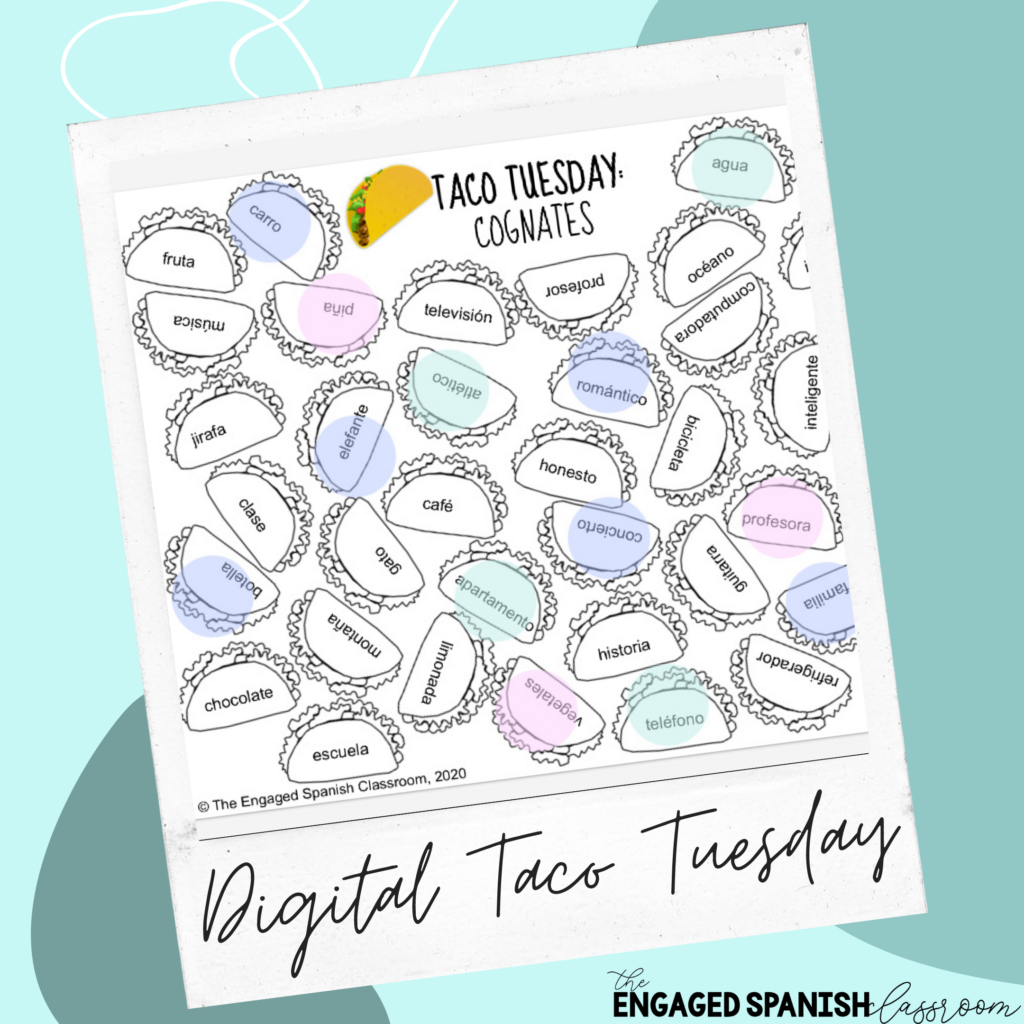
2. Sonidos Secretos
This is probably the silliest activity I do with my classes, and they adore it!
For a more detailed walkthrough, please visit this tutorial blog post.
It is based off of “The Whisper Challenge” from Jimmy Fallon. To play, students first sit in pairs. One student wears headphones, and one student reads a student or teacher-created sentence from a card. They read it slowly and dramatically, but in a whisper.
The student with the headphones has to try to read their partner’s lips to “decipher” the sentence. This usually ends with my classes in absolute giggles. If you need to build morale in any certain class, I highly recommend this activity as well as Taco Tuesday (above). Another option for Sonidos Secretos is to showcase two students at the front of the room. Have them perform the activity in front of the class, and everyone is sure to enjoy it!!
What do YOUR classes find fun? What works for them? What gets them engaged and motivated?
It is important that we take time to provide our students “breaks.” This can sometimes be brain breaks, review days, or review activities where students feel like they are “playing” more than learning. This style may not work for everyone, but it has absolutely worked for me and made my teaching much more enjoyable. My classes have not touched a textbook in a few years, and that’s exactly the way I like it!
Last but not least, activities that call for tech
1. Quizlet Live (try a relay!)
I love traditional Quizlet live, and for my more active classes I love to turn it into a relay. All devices are on one side of the room, and all students stand with the teams on the other side. Only one student can be near their team’s group of devices at a time. The next person can’t move until that person answers, and comes back to tag them! It gets VERY competitive! (Another lovely idea from Srta Spanish!)
2. Kahoot (of course!)
This online game gets everyone engaged. Like Quizlet, there are many sets that have already been created but you always want to check for spelling and accuracy.
3. Gimkit
Classes get VERY into this one! It has a similar setup to Quizlet or Kahoot, but students are working for “$” instead of points. You can set the game to a time limit or an earning goal. I have *never* hear my kids shout so much over answering vocabulary questions!
Taking it further
You may also be interested in the following activities to promote speaking when your students are a bit more confident with their unit:
Thank you for reading!
I hope you were able to get a few new ideas for introducing your next unit! Good luck, have fun, and let me know in the comments if you’ve had success with any of these activities with your students.
I also love to see how you incorporate these activities into your classroom, so feel free to tag me on social media! I’m on IG @theengagedspanishclassroom, on Twitter @engagedspanish, and on Facebook as The Engaged Spanish Classroom.



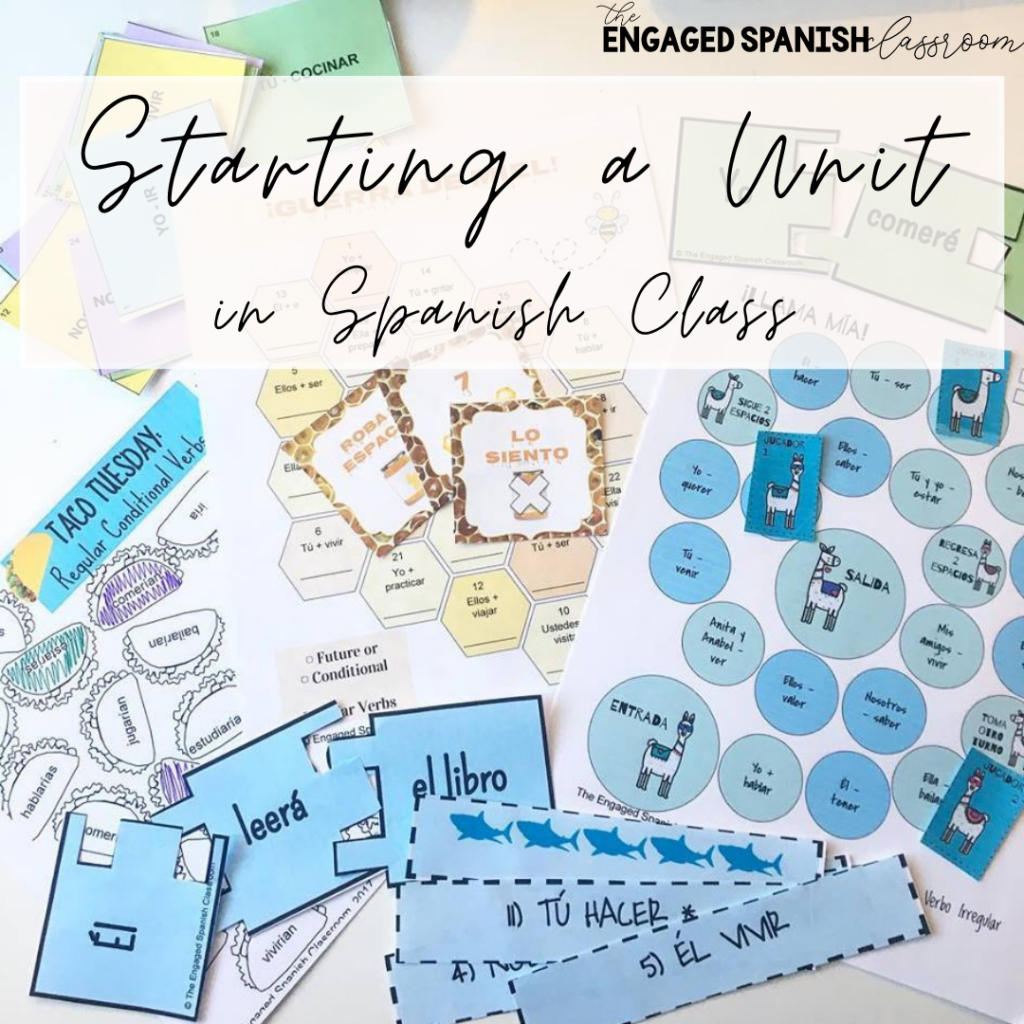
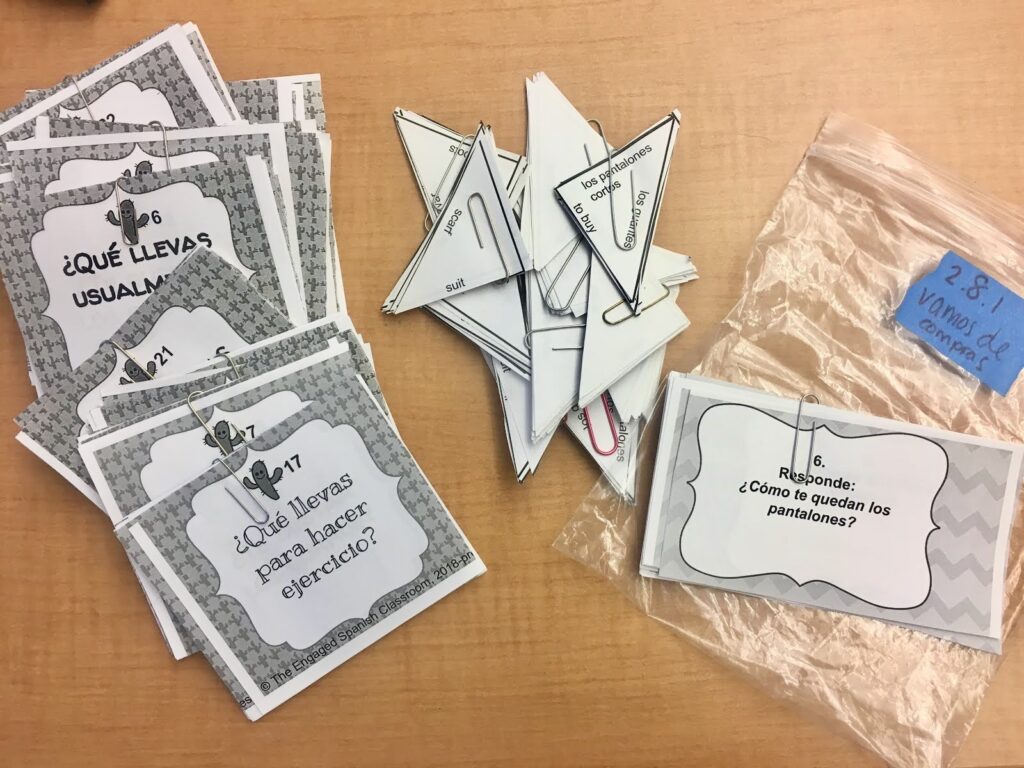
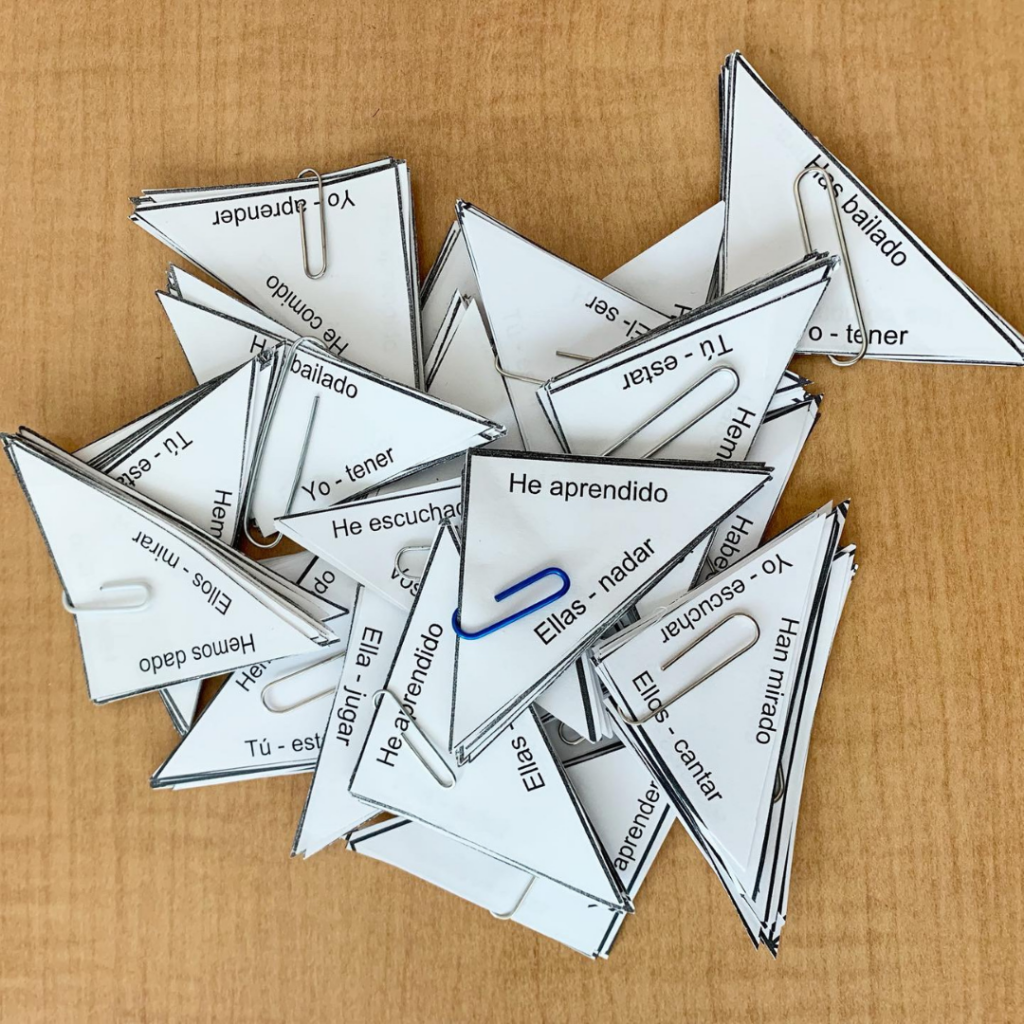
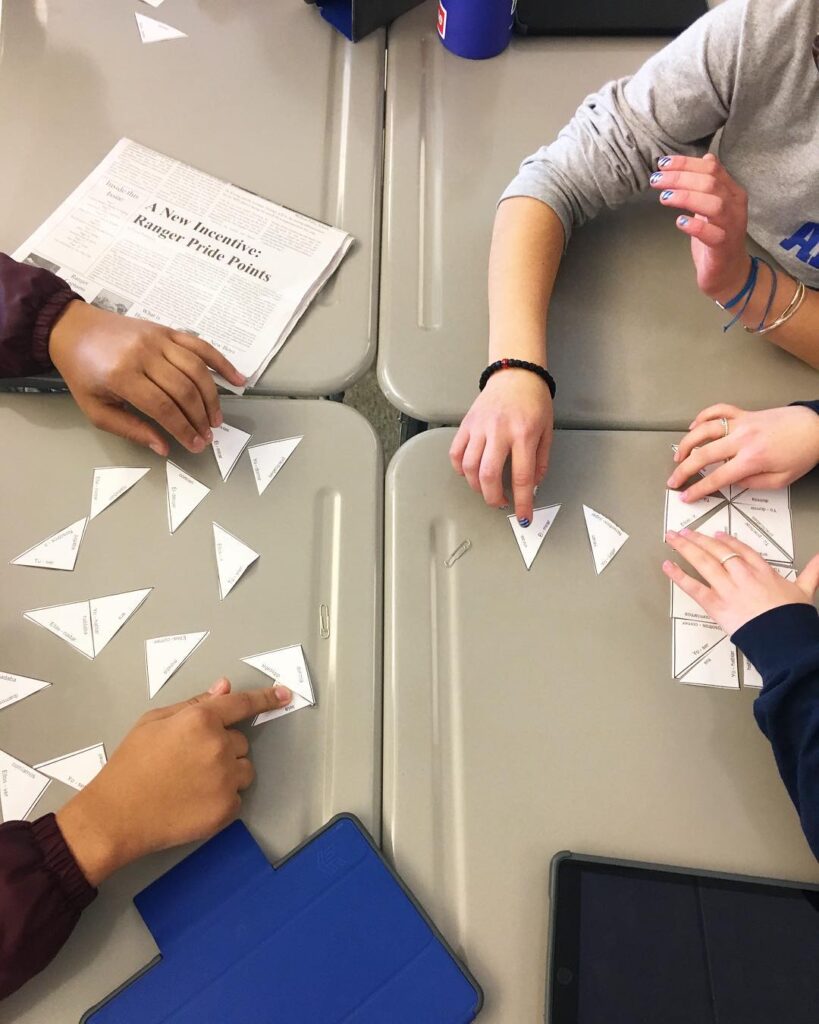
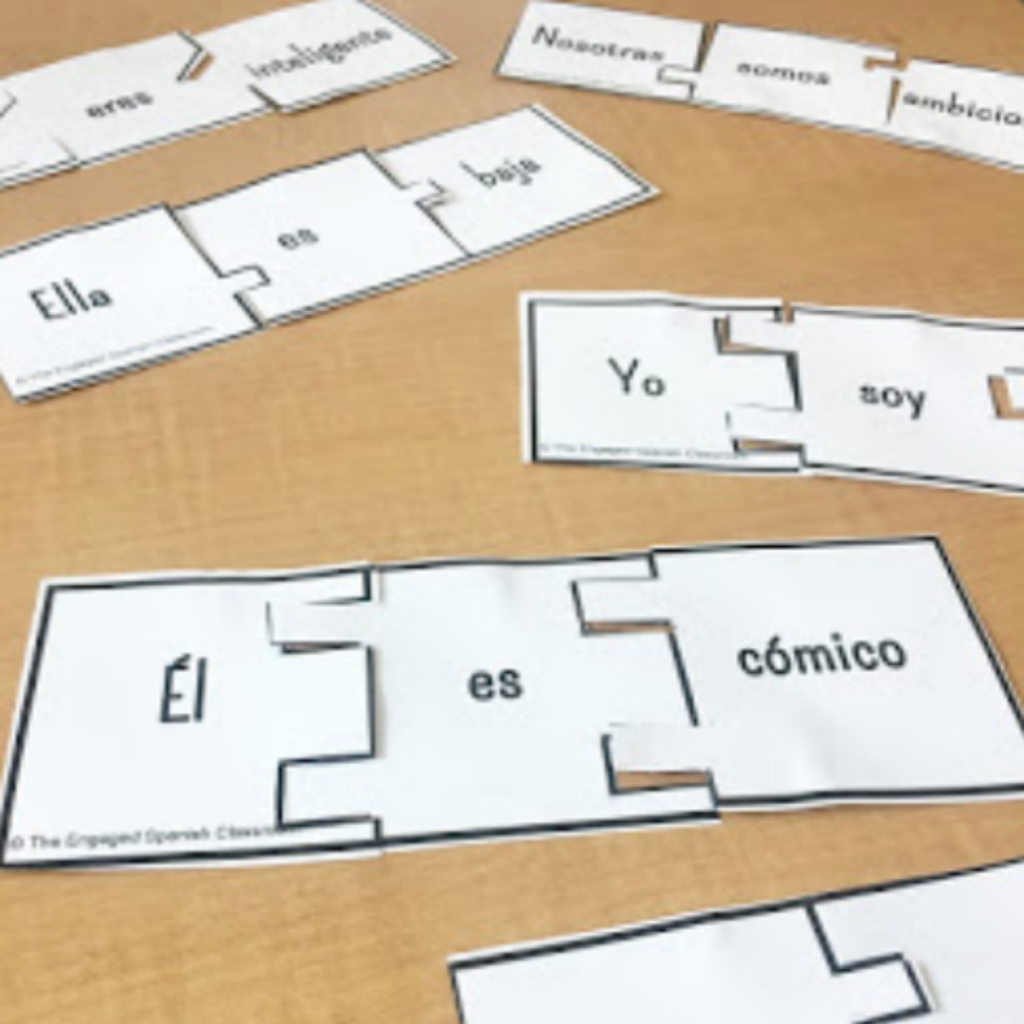
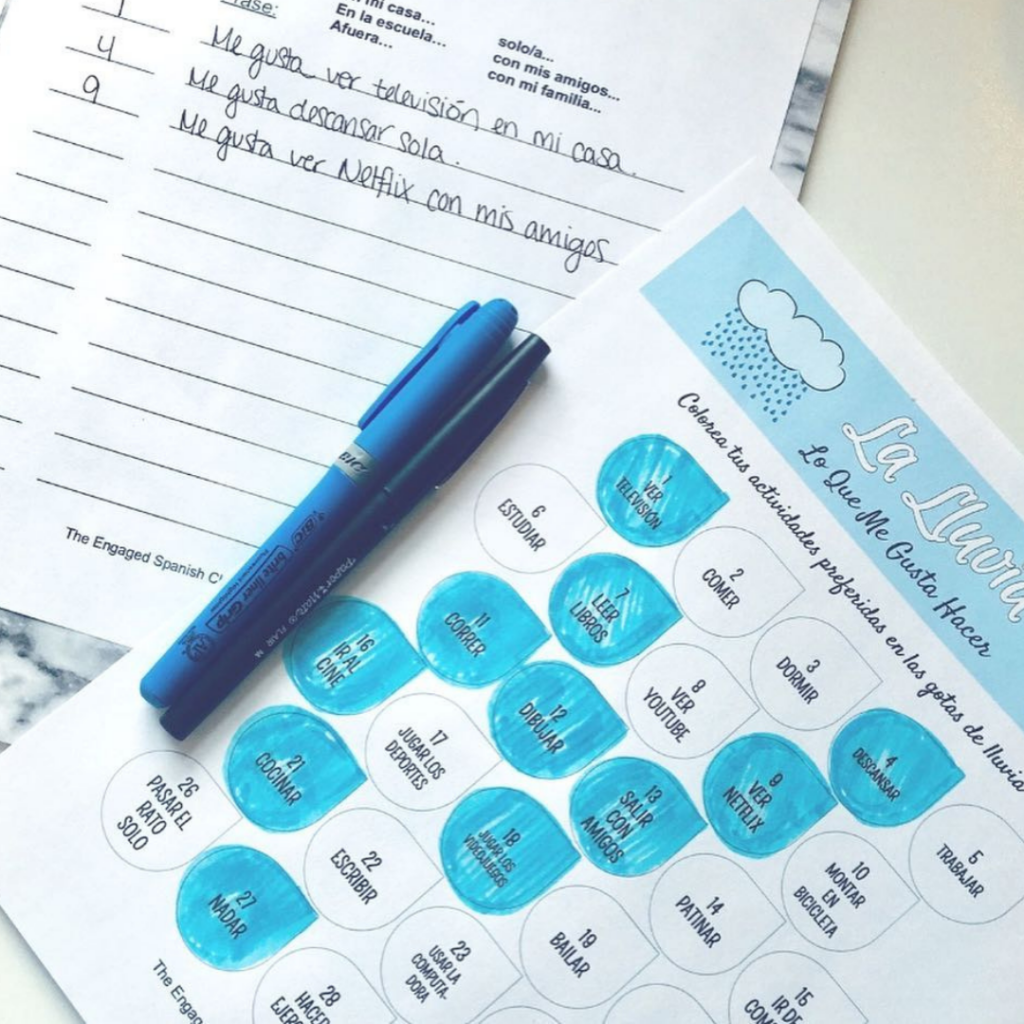
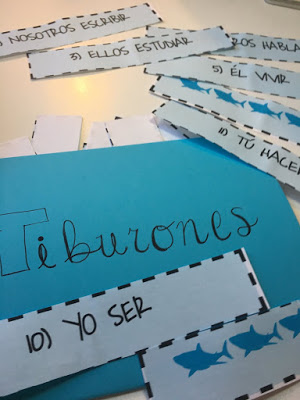
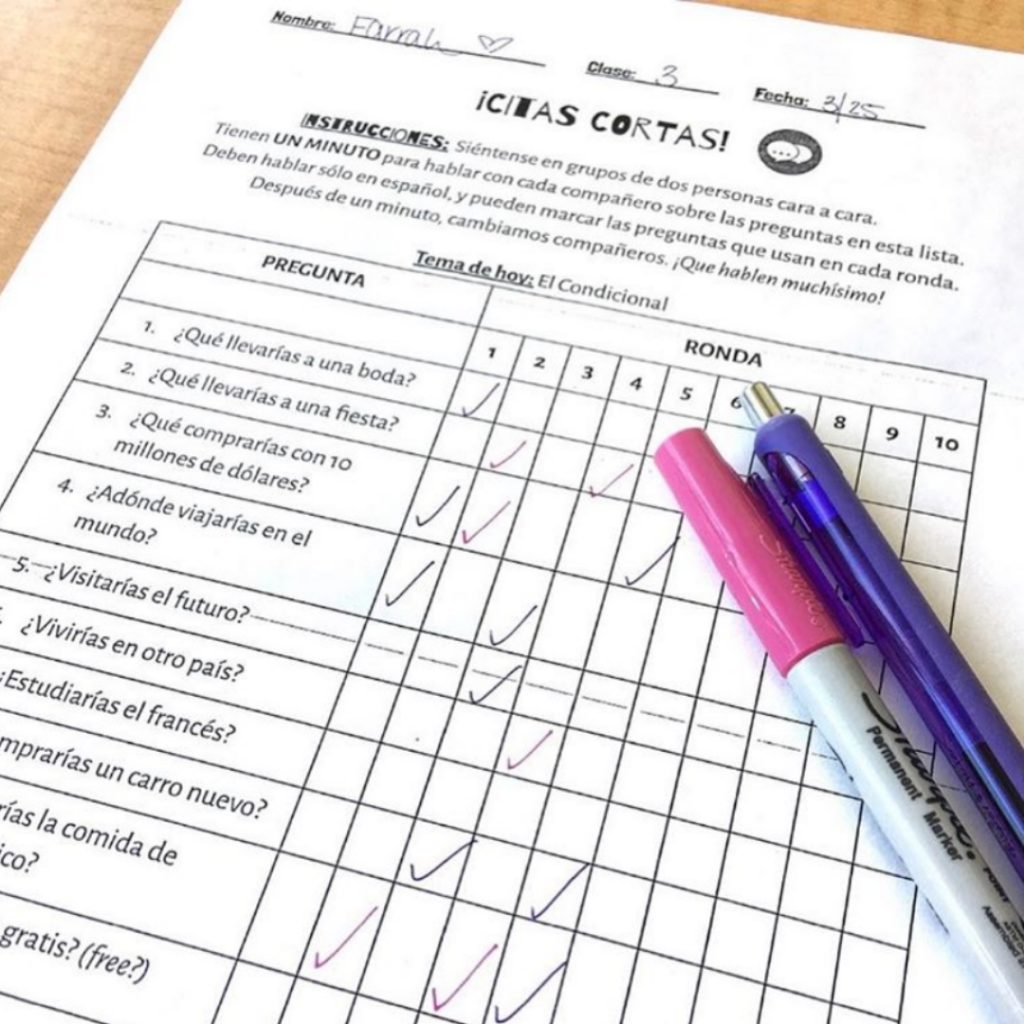
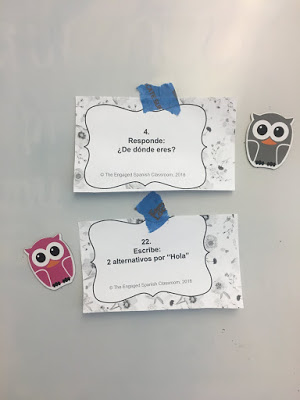
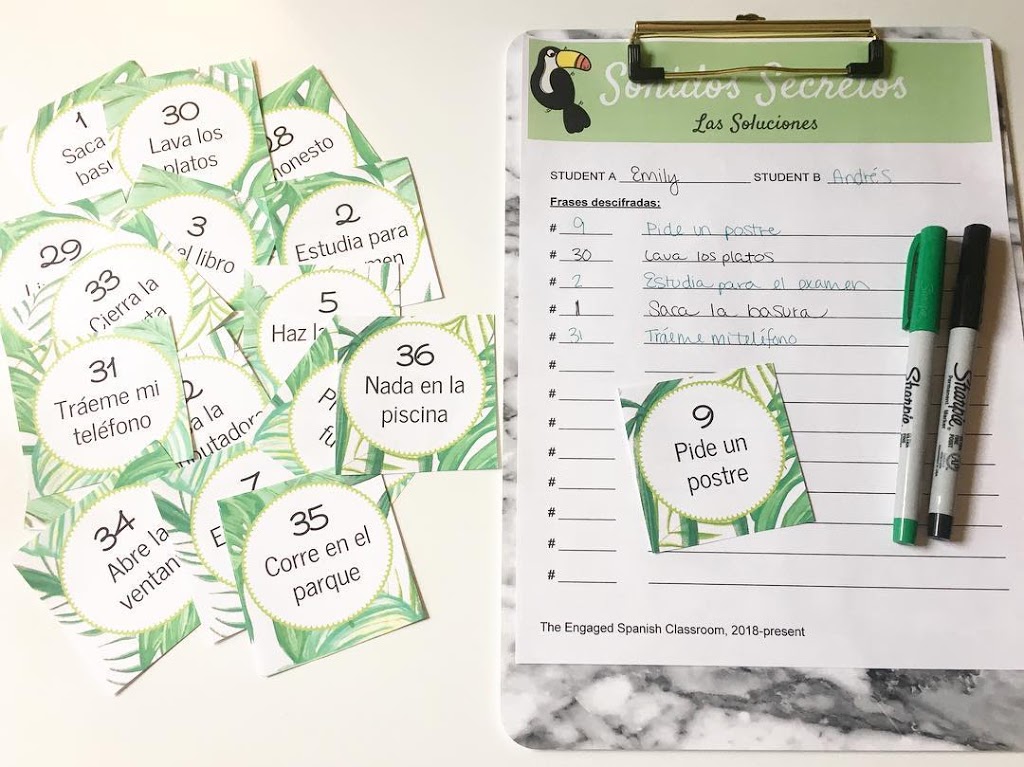
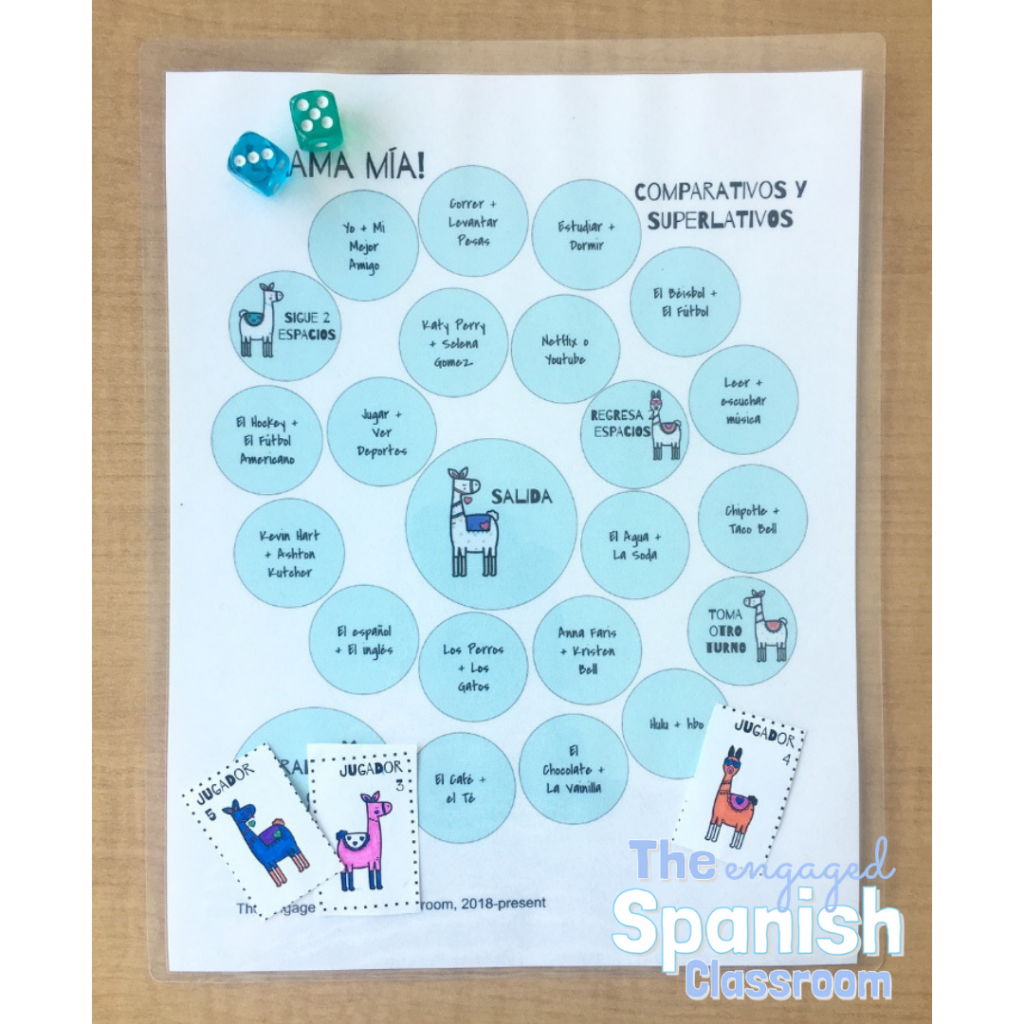
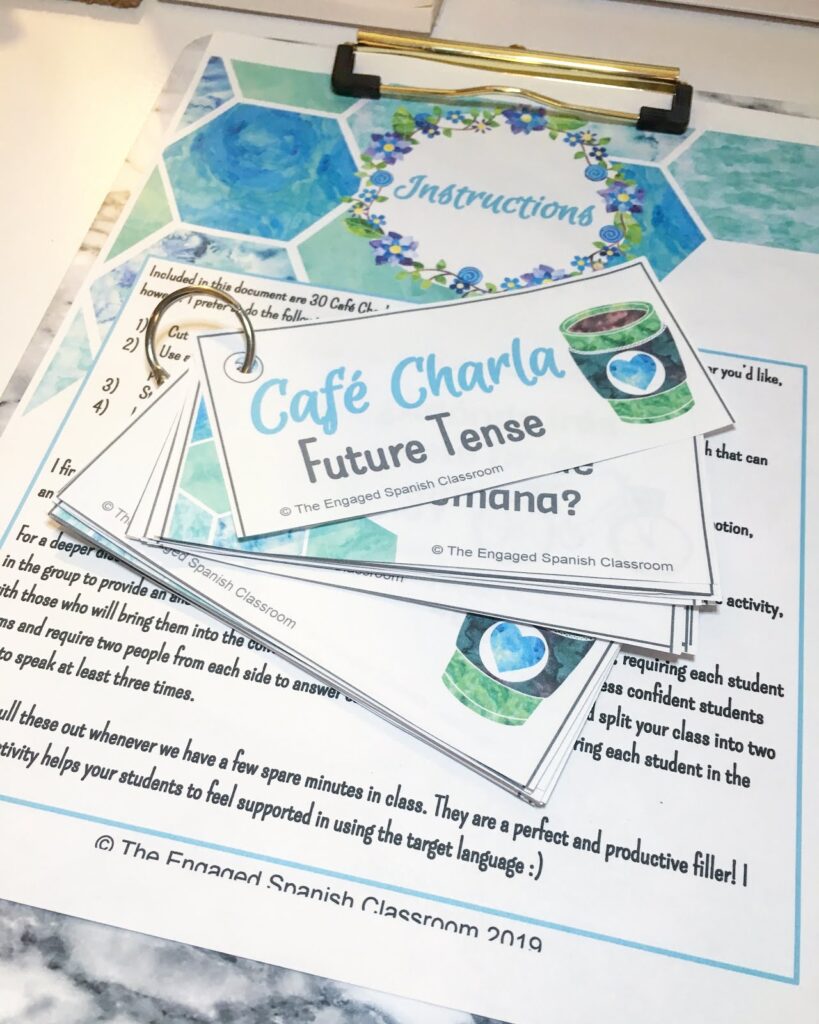
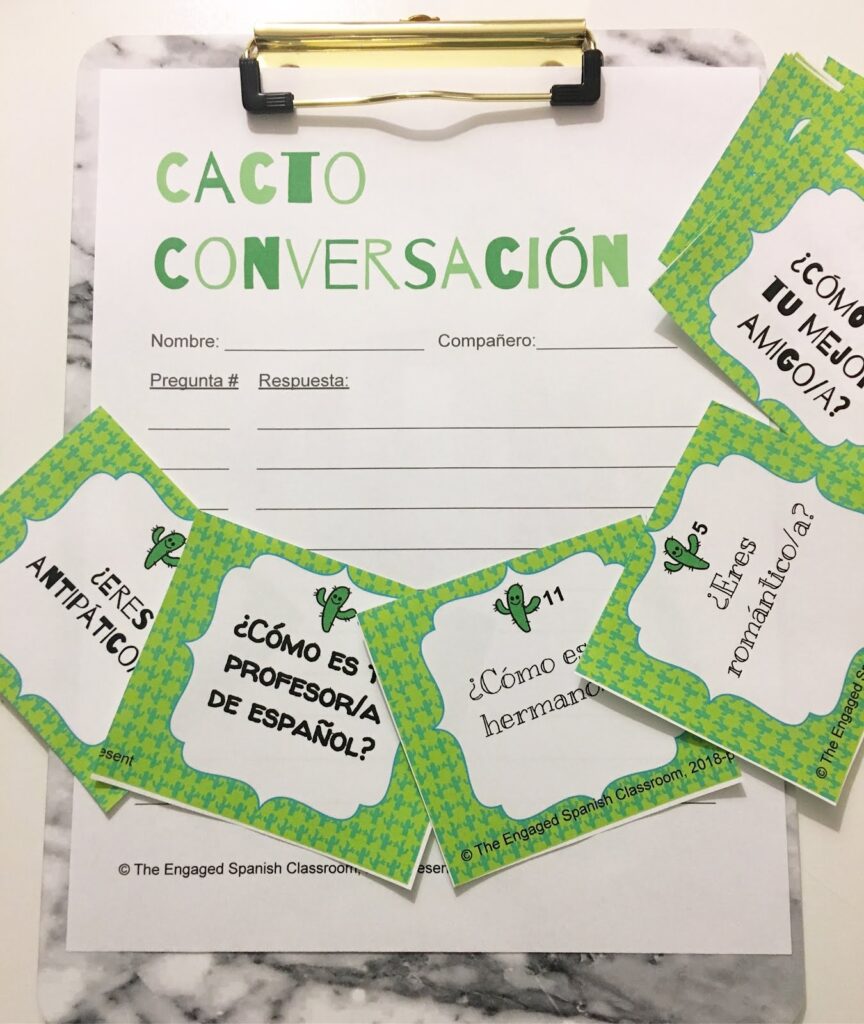


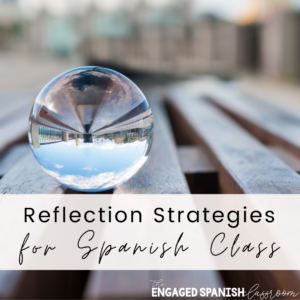
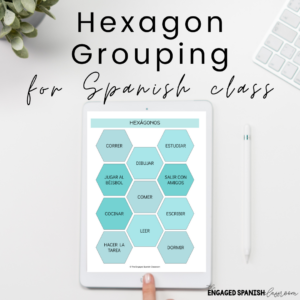


2 Comments
Guau, solo guau. This is so impressive! Thank you for giving this veteran teacher new tricks in her bag!
I am so glad you liked it! 🙂